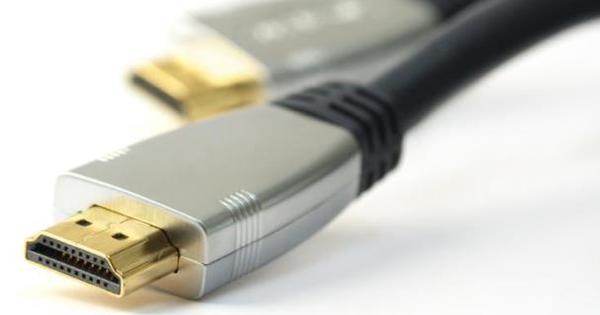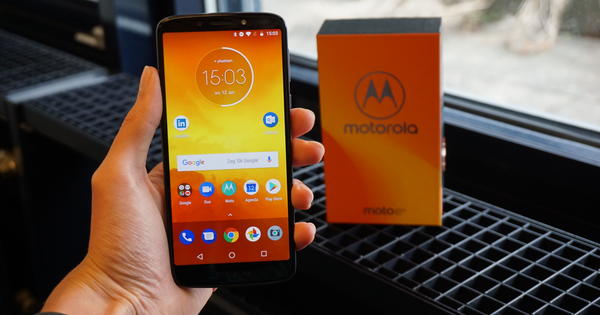MS-DOS, the predecessor to Windows, is still alive and kicking! In fact, in Windows 10, DOS has been improved for the first time in many years. With DOS things often still go much faster than with Windows and with DOS you can do things that Windows still cannot.
Tip 01: Start DOS
It takes six clicks to know the IP address of a network connection in Windows 10. Or you open the command prompt and run the command ipconfig off, that is faster and provides better information. System administrators know it well, they use the command prompt and not just to find an IP address.
The command prompt in Windows is an example of a command-line interface (CLI), a way of computing where you type text commands and have them executed. With a command you can request information, but also configure things. Linux and OS X also have such a CLI. Windows even has two, because in addition to the DOS prompt, there is also PowerShell, which is more powerful but also more cumbersome. To launch the Command Prompt, click Start and type the search term Command Prompt or cmd (that's shorter after all). The Command Prompt is found, click on it or press Enter to launch the Command Prompt. Or even faster: left click on Start and choose Command Prompt.
A Brief History of DOS
MS-DOS was the operating system before Windows. DOS was not graphical and did not have a mouse. Had you booted DOS, the screen was blank and dark with just a blinking cursor inviting you to type a command. You could then run a program (one at a time) or change something about the configuration of DOS, such as how the memory was used. DOS users spent a lot of time on that. DOS is the program that made Microsoft great. It bought DOS in 1981 from a small Seattle company and renamed it MS-DOS.
The rise of MS-DOS began when IBM released a computer for personal use and shipped MS-DOS as its operating system with each computer. It was a revolution: within a few years there was a computer on every desk and MS-DOS on every computer. Computers became more powerful and the mouse was introduced. Microsoft responded by developing Windows, a program that you started from DOS and that gave the computer a graphical shell. It wasn't until Windows 95 that Windows stopped relying on DOS, and since then, with each version of Windows, DOS's role has diminished. Now there is no longer DOS 'under' Windows, but there is still a DOS 'in' Windows where you can still execute DOS commands.
Tip 02: Transparency
The Command Prompt or the DOS Prompt as many call it has been made transparent in Windows 10. This is useful if you execute a command that you read in the browser, for example. And that could also be practical on computers with a small screen such as a laptop or tablet. However, the transparency also has a major drawback: not only the background of the window becomes transparent, so does the text. And it really is much less readable. You may want to roll back this Windows Command Prompt update as soon as possible. In that case, right-click the Command Prompt title bar and choose Features / Colors. At the bottom of this tab is the option dullness. Move the slider to the right for less transparency, then click OK. If you ever want to look through the window, you can always do that live via Ctrl+Shift+Plus sign or Ctrl+Shift+Minus sign or by rotating the scroll wheel of the mouse with Ctrl+Shift pressed.
Tip 03: Adjust colors
For the sake of clarity, the transparency has been completely turned off in the screenshots for this article, you do not necessarily have to do that yourself, the transparency can be very nice and handy. In addition to transparency, the colors are also very important for the ease with which you read the text. The standard colors are good, but could be better, you can then read both input and output better.
For this you also have to click on the tab Colors to be. For example, select Screen text and then from the color bar below, choose purple, green, or red, or whatever color you want. The change is not immediately shown in the command window, but there is a preview on the tab itself. You can also choose another screen background choose, that is the replacement of then the black, and the same goes for the text and background of selected text via Pop-up text and pop-up background. If everything is nice and legible, click on OK.
Short MS-DOS course
If you want to use DOS, but are unfamiliar with using a command prompt and DOS, start here. Once you have started the command prompt, a horizontal line will flash. That's the cursor and any command you enter will be placed there. It will only be executed when you press the Enter key. The result of a command almost always appears here in the window. Tap the command ipconfig and run it by pressing Enter. You will now see a list of the network cards ('Ethernet adapter') and with each you will see the network data, including the IPv4 address. If you want more information about a command, use the option after the command /?. So ipconfig /? provides information about the command ipconfig plus all the options you can use. Want to learn more DOS commands? In addition to the commands in this article, there are many more and there is a lot of information about them online.
Tip 04: Window Size
Depending on the command, more or less output is returned. However, it is hardly ever useful when the output is so wide that it runs out of the screen or when you have to scroll to see everything. In Windows 7 and 8(.1) it was therefore better to click on the tab Layout with the options Width and Height resize the window. In Windows 10 this is no longer necessary. You can of course make the screen bigger, the height is especially useful, but the width is now replaced by the option Text wrapping output on resize. You can just start with a narrow window and if the text is too wide, just use the mouse to make the window wider. The text will then reorder itself in the window just like in a word processor and what was not visible will become visible. Re-executing the command as in Windows 7 and 8(.1), which is not always desirable, is no longer necessary.
Tip 05: Select text
Selecting text was a drama in the previous versions of the Command Prompt. First you had to right-click and indicate that you wanted to highlight text, and then only be able to select text via block selection. Block selection means you draw a square and everything in it will be selected and the rest will not. In Windows 10 this has been adjusted and selecting text works just like we are used to from Word, for example. Use the key combination Ctrl+M to switch to mode To mark and you will also see this in the title bar. Now you can click anywhere in the window with the mouse and then select exactly what you want with the left mouse button pressed. Do you still want to select a block (which can certainly be useful with commands like dir and dir /w requesting folders and files in a folder), first press and hold the Alt key when using the mouse to select.

